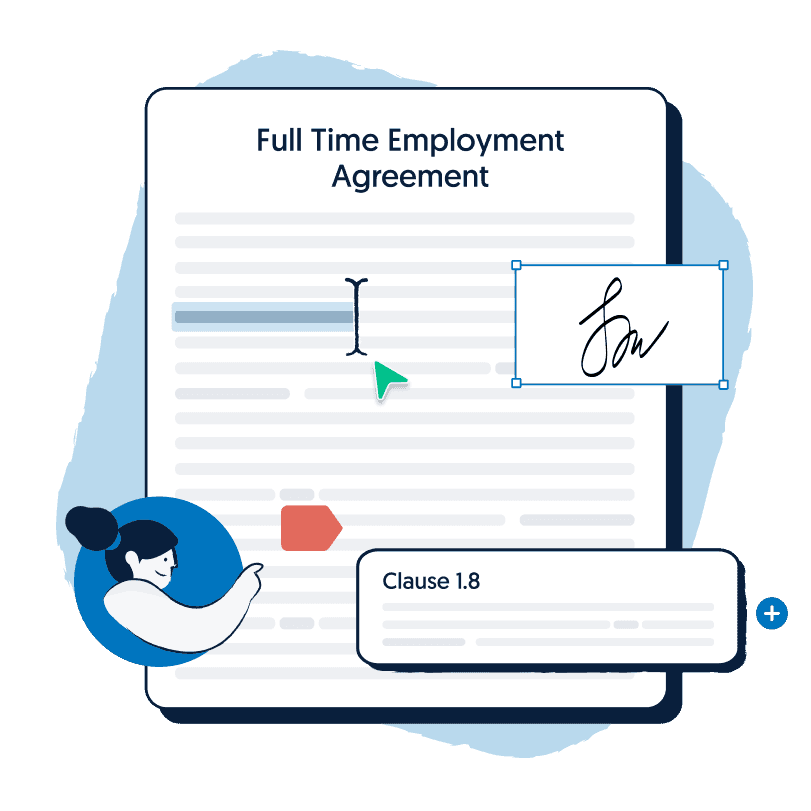Sydney-based lawyer, working in Corporate Advisory & M&A for Sparke Helmore Lawyer. Laura is passionate about how technology can assist in improving access to justice.
Are you an employer seeking out the best candidate to fill a role? Reviewing an abundance of resumes can be overwhelming. This is why it is important to read between the lines. Being able to efficiently evaluate resumes makes the interviewing process more effective. Further, resumes provide a great opportunity to assess a candidates attention to detail and writing skills. Read our guide uncover to 5 resume red flags you should look out for.
Table of Contents
1. Job Hopping
A history of job hopping can be a major red flag for employers hiring new employees. In Australia, the average cost per hire is $5000. Hence, when hiring you want your chosen candidate to stay at the company for the long term. Therefore, if a person has a past of staying at each job for a few months and then switching, it may flag an underlying issue.
However, you should not completely discount a job hopping candidate. This is because there may be a number of valid reasons for changing jobs. Today, job hopping is increasingly popular. It is becoming more uncommon for employees to stay at the same workplace for over 5 years. Hence, instead of simply saying no, ask the candidate about their employment history and career goals for your role. The candidate may also explain this in their cover letter. For further information, read our guide ‘6 Tips For Writing a Great Cover Letter‘.

Get your Full Time Employment Agreement legal document for free.
2. Spelling/Grammar Mistakes
Spelling or grammatical errors is a big no-no. A resume should be carefully crafted and properly proof read. If a resume contains significant spelling or grammatical mistakes, this can be evidence of a lack of attention to detail or simply carelessness. Ultimately, it raises the question if they can’t take care in an important document like their resume, how will they approach day-to-day writing tasks?
3. Gaps in Employment
Big gaps in employment is an age-old red-flag for employers. This is because large gaps from the workplaces can indicate a lack of present industry experience. However, gaps in employment can be for genuine reasons. For example, time off to raise children, gain experience in another industry, further their education, travel and so on.
4. Poor Formatting
A clear, concise and well-presented resume tells a thousand words. Pay close attention to how the candidate has formatted their resume. Is their employment history in chronological order? Is the font, size and spacing conventional and easy to read? A resume should use bullet-points rather than block paragraphs. If the job advertisement has identified certain requirements, these should be included on a candidate’s resume. For more information, you can read our guide ‘What Should I Include in My Resume?‘.
5. Over-descriptions
Fluffy, over-descriptive language is never an easy read. Employer’s may view this as a way of over compensating for an area or skill an employee is not strong in. Further, long-winded descriptions of a candidate, their skills or hobbies doesn’t go down well.
On the flip side, vague and ambiguous descriptions are also a red-flag. This generally indicates a lack of knowledge or experience in an area. A resume should be specific and outline achievements in a concise and logical manner.
Concluding Thoughts
To conclude, if you’re looking to hire new employees, a resume is your first impression of a candidate. This is why it is important to look out for the 5 resume red flags discussed above. However, this does not mean you should scrap a candidate if they exhibit one of these red-flags. Rather, if they are a strong option, you should question the issue in their interview. If you need legal advice surrounding hiring new employees, consult an Employment Lawyer.
Don't know where to start?
Contact us on 1800 529 728 to learn more about customising legal documents, obtaining a fixed-fee quote from our network of 600+ expert lawyers or to get answers to your legal questions.






